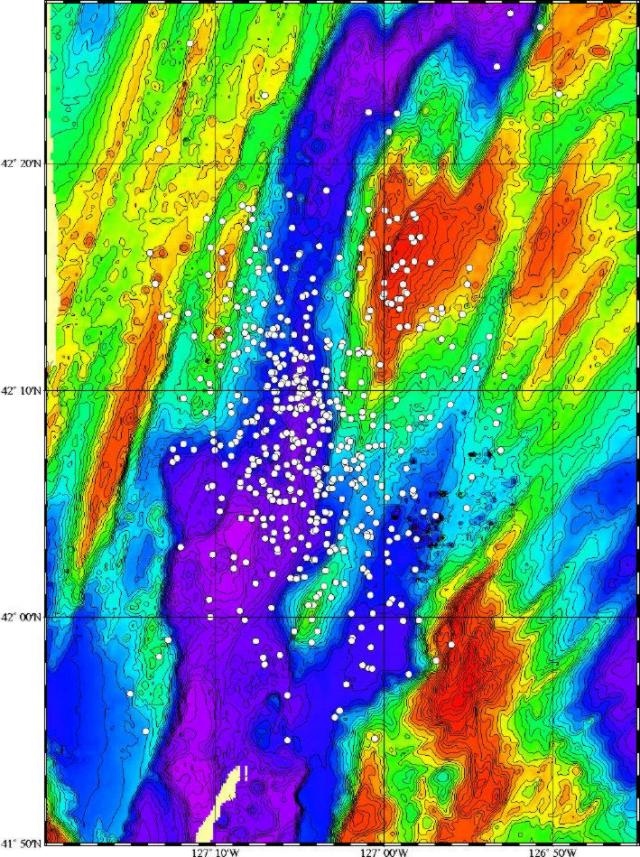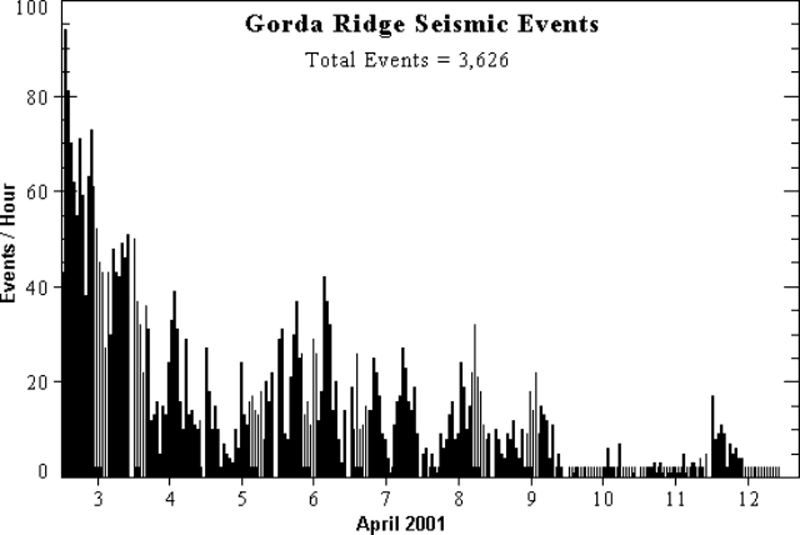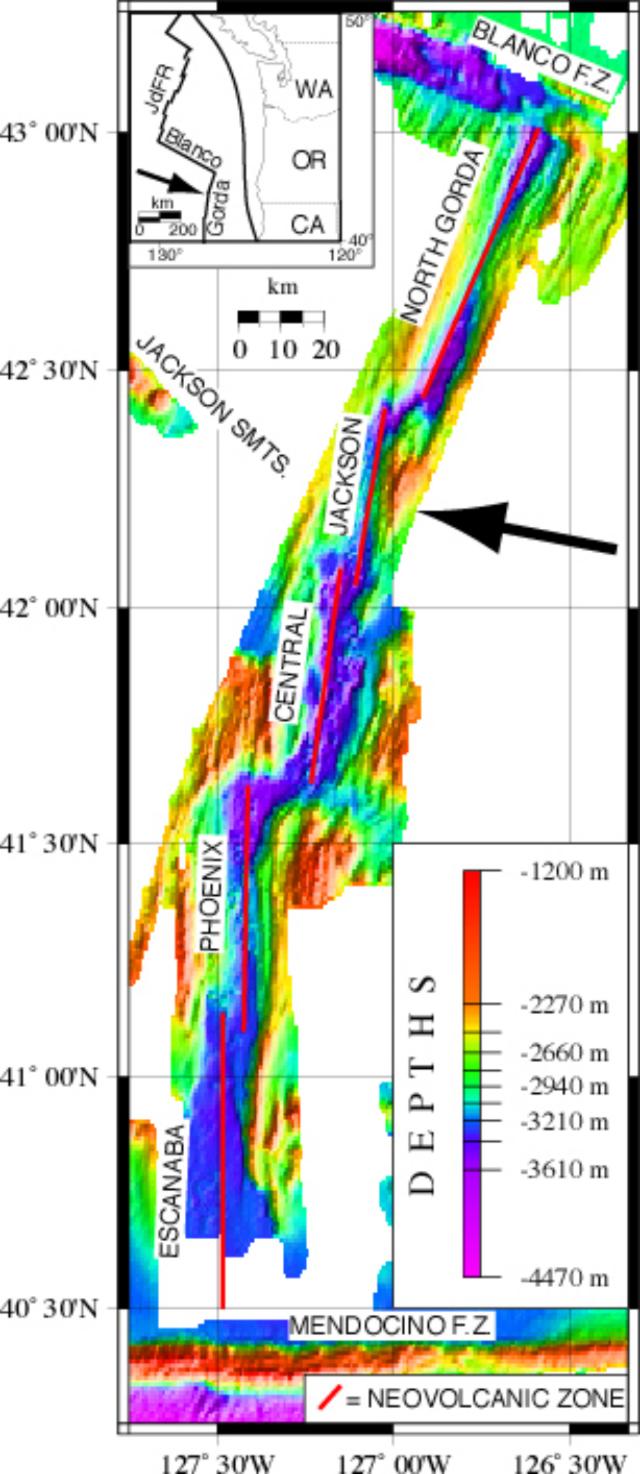Report on Jackson Segment (United States) — March 2001
Bulletin of the Global Volcanism Network, vol. 26, no. 3 (March 2001)
Managing Editor: Richard Wunderman.
Jackson Segment (United States) Volcanic seismicity along the Jackson segment, early April 2001
Please cite this report as:
Global Volcanism Program, 2001. Report on Jackson Segment (United States) (Wunderman, R., ed.). Bulletin of the Global Volcanism Network, 26:3. Smithsonian Institution. https://doi.org/10.5479/si.GVP.BGVN200103-331032
Jackson Segment
United States
42.15°N, 127.05°W; summit elev. -3100 m
All times are local (unless otherwise noted)
Volcanic seismicity along the Jackson Segment of the Gorda Ridge (figure 1) was detected by the NOAA/PMEL T-Phase Monitoring System beginning at ~1750 on 3 April 2001. Data were recorded using the U.S. Navy's Sound Surveillance System (SOSUS) in the NE Pacific, and were similar to the seismicity produced by the February 1996 eruption along the North Gorda Ridge segment of the ridge (BGVN 21:02).
For the current episode, epicenters were inferred from hydroacoustic analysis (figure 2). Multibeam bathymetry from the area indicated that the signal source came from within the central axial valley. The activity was located near the summit of the "narrowgate" on the S side of the ridge, and indicated possible dike propagation.
 |
Figure 2. Earthquake locations for the Gorda Ridge derived from hydroacoustic monitoring. The time interval for these events is undisclosed. Courtesy of NOAA/PMEL. |
The source of the recorded signals was analogous to the 1996 event's relative location along the ridge. The nature of the seismic character was consistent with other examples of volcanic seismicity that were detected hydroacoustically. These events were characterized by low-magnitude earthquakes emergent from background ambient ocean noise without a large "mainshock" to initiate the sequence. These were then followed by over a week of elevated seismicity, with rapidly repeating (up to 100 events/hour) small earthquakes and nearly continuous volcanic tremor in the range of 2-30 Hz (figure 3). The events were heard on multiple SOSUS arrays without the benefit of beamforming, indicating that they were relatively loud. Recorded epicenter locations as of 4 April indicated lateral migration of events to the S, typical of dike injections. As of 14 April, no hydrothermal plumes had been successfully detected.
 |
Figure 3. Histogram showing seismic events per hour along the Gorda Ridge during 3-12 April 2001. After a figure of NOAA/PMEL. |
Geological Summary. The Jackson Segment of the Gorda Ridge more than 200 km off the coast of Oregon lies immediately SSW of the North Gorda Ridge, the northermost of five segments forming the Gorda Ridge spreading center. The first recorded activity took place in April 2001, when volcanic seismicity was detected by hydroacoustic monitoring. The seismicity indicated possible dike propagation to the south and was similar to that which was documented at the time of the eruption of a submarine lava flow from the adjacent North Gorda Ridge segment in 1996. The 2001 activity originated from the central axial valley of the Jackson Segment, near the "narrowgate" on the southern part of the segment. Later surveys, however, revealed no evidence for submarine eruptive activity in April 2001.
Information Contacts: Chris Fox, Bob Dziak, and Paul Will, NOAA Pacific Marine Environmental Laboratory (PMEL), 2115 SE OSU Drive, Newport, OR 97365 USA (URL: https://www.pmel.noaa.gov/).


